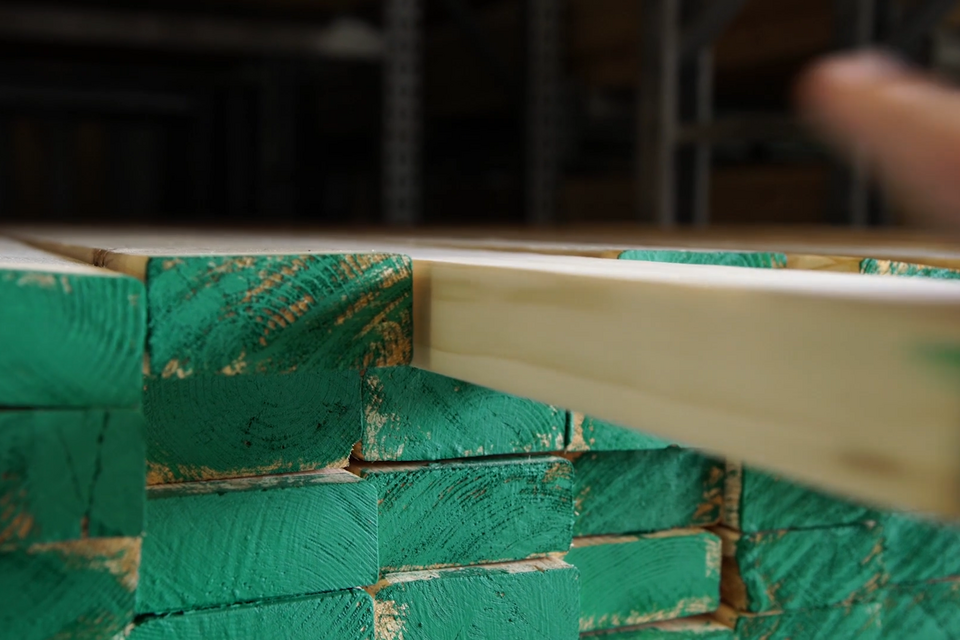2021 was a very rough year for the lumber market and, unfortunately, December was a particularly hard month. On December 1st (and after many months of processing), the United States Department of Commerce increased the Softwood Lumber Duties to Canada an additional 8.99% to 17.90% (an adjustment based on injuries caused by anti-dumping and countervailing) but, ironically, the duty was ricocheted back to the American consumers of Canadian lumber as the Canadian mills simply added it to their costs. An 8.99% increase was bad enough, but it was easy to be buried under the rising prices that were caused by an escalating demand, made worse by flooding in British Columbia, which wiped clear miles of rail lines and roads and put under water many acres of dry storage, limiting the ability of lumber mills to produce, ship and store their material. The sudden inability to obtain Western lumber and plywood set the market alight (mostly due to the fact that hundreds of anticipated orders were now without estimated arrival dates) so buyers had to scramble to cover their needs, turning to distributors and alternative mills with the hopes of fulfilling orders for prompt delivery. However, getting anything fast that ships on the back of a truck today is somewhat of a pipe-dream. It bears repeating that the severe shortage of trucks and drivers is an inescapable issue when it comes to obtaining material from any supplier, and quick-ship options only occur by chance. To add pain to misery, a proposed January 15th deadline by Canadian and U.S. governments requiring truckers to present vaccine passports at the border is threatening to make the trucking situation even worse. According to the Canadian Trucking Alliance, an estimated 20,000 drivers may leave their jobs in protest if vaccinations will become a requirement to ship to the United States. With this disturbing news, buyers became even more charged with the fear of running out of stock and paying exorbitant prices, so most spent the better part of the month in a state of high anxiety, grasping for anything that they could get their hands on for immediate delivery, trying to build orders for January shipment while simultaneously hunting down their past-due orders. As lumber supplies rapidly dwindled at retail and wholesale levels, unfortunately, in sympathy, lumber prices rapidly shot upward. As of print, there is a pause occurring in buying, attributed to upcoming holiday shut-downs and buyers having their current and near-term needs covered. We anticipate that this latest run-up is likely an over-reaction and will hopefully plateau as loads of lumber and plywood hit their destinations. It could extend if demand and trucking doesn’t ease up after the New Year but, conversely, adverse weather conditions that impede construction could certainly cool the market down as well. Overall, we are in a great position with our inventory and are ready to service your needs, but if you have any questions or concerns about current or upcoming jobs, please consult your Shepley sales person.
Speculating on where a particular market is going in a business setting is akin to recreational gambling, although the result may not be quite as clear and immediate (and it’s certainly not as entertaining). With our global economy (and especially since the COVID-19 pandemic), situations far and near have a profound effect on our local purchasing ability and habits. For the most part, no one can see what’s coming until it’s here, so trying to out-smart the market that is so easily excited or deflated by the effects of weather, politics, economic disruptions and human nature, throughout the globe, is a big gambling risk, especially for lumber which has the distinction of operating on extremely low margins. Opportunities do still exist, but the reward may not be as great when compared to the risk of incurring a significant price penalty or being saddled with excessive volume if a dealer or wholesaler were to get it wrong. Many dealers learned the hard way in 2021 when the last rally ended in May, as they were stuck with high-cost lumber for months but had to sell at market levels in order to remain competitive. With lumber in today’s climate, we believe that the best approach is to act on opportunities that fit our needs when we can and take advantage of our contracts and relationships with our trusted traders. Our contracts help to insure that we have the quality wood that we need when we need it and at competitive prices. Our relationships with our traders also help to give us insight to impending issues that oftentimes give us a chance to seize an opportunity before it’s announced to the world. The “loading the boat” approach to purchasing can have a profoundly negative effect on pricing in an unstable market, so we choose to average our costs by carrying enough inventory for a typical month’s worth of sales and, if we need to do our own hedging, to have on order another month’s worth. By working with our average rolling costs, we are able to clip the peaks and valleys from the costs of the materials, and provide you with a bottom line, cumulative price quote that is as competitive (and oftentimes even more competitive) than those yards that choose to buy on speculation. You can be confident that we have covered our inventory needs with the quality stock at competitive prices that you have come to expect from us and we are always well-poised for business. Happy New Year and thank you for your business!
“What goes up must come down…”
“…but don’t expect it to come down where you can find it”
“…even if you feel a million feet off the ground.”
